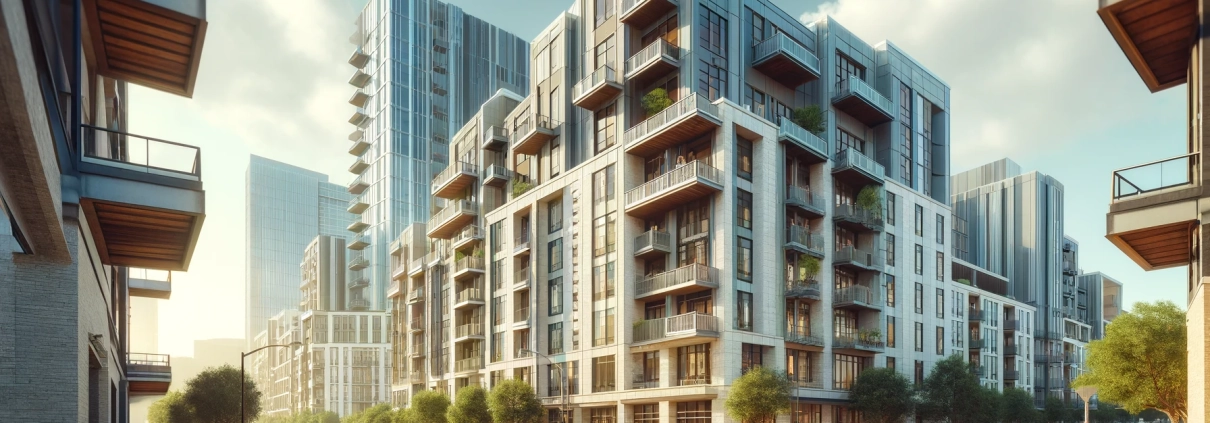Trended Rents
Rental rate figures which are based upon some market growth projection. Trended rents use historical market data as an indicator of future growth, in contrast to “untrended rents” which assume no growth in annual rents.
Real estate discounted cash flow models, which account for rental growth, generally are capable of calculating the trended rental rate of an investment at some future date (see the A.CRE Ai1 DCF as an example).
Putting ‘Trended Rents’ in Context
Mini-Case: The Austin Ridge Apartments – Applying Trended Rents for Future Growth
Granite Peak Properties, a real estate investment firm known for its strategic value-add investments, has recently acquired The Austin Ridge Apartments, a market-rate multifamily complex located in Austin, Texas. The property consists of 200 units, including a variety of one, two, and three-bedroom apartments.
Initial Assessment and Strategic Planning
After acquisition, the team at Granite Peak conducted a detailed review of the existing rent structures and historical rental trends. They noted the average current rent stood at $1,200 per unit. Historical analysis indicated an average annual rental growth rate of 3% over the past five years in the local market.
Implementation of Trended Rents in Financial Modeling
- Current Average Rent: $1,200 per unit per month
- Annual Growth Rate: 3%
- Projected Rent in Year 1: $1,236 per unit per month (calculated as $1,200 × (1 + 3%))
- Projected Rent in Year 5: Approximately $1,393 per unit per month (calculated as $1,200 × (1 + 3%)^5)
Financial Impact and Future Projections
By applying trended rents, Granite Peak projects an increasing net operating income (NOI), which significantly boosts the property’s valuation and improves potential ROI. This approach also provides a strategic edge for future refinancing or sale opportunities, reflecting a realistic and proactive financial planning method.
Conclusion
Through the implementation of trended rents, Granite Peak Properties effectively leverages market growth trends to enhance investment outcomes. This case exemplifies the practical application and financial benefits of using trended rents in commercial real estate investment models.
This scenario is hypothetical and is provided for illustrative purposes to explain the application of “Trended Rents” in a commercial real estate context.
Frequently Asked Questions about Trended Rents in Commercial Real Estate
What are trended rents?
Trended rents are “rental rate figures which are based upon some market growth projection.” They rely on historical market data to forecast future rent growth.
How do trended rents differ from untrended rents?
Unlike trended rents, “untrended rents assume no growth in annual rents.” Trended rents incorporate an expected annual increase based on market conditions.
How are trended rents used in real estate financial models?
They are used in “real estate discounted cash flow models,” which “account for rental growth” to calculate projected future rents and improve long-term investment valuations.
What was the starting rent used in the Austin Ridge Apartments example?
The initial average rent at The Austin Ridge Apartments was $1,200 per unit per month.
What growth rate was applied to calculate trended rents in the example?
Granite Peak applied a 3% annual growth rate, based on historical rental trends in the Austin market.
What was the projected rent in year 5 using trended rents?
The projected rent in Year 5 was approximately $1,393 per unit per month, calculated as $1,200 × (1 + 3%)⁵.
What financial impact do trended rents have on an investment?
Trended rents lead to an increasing Net Operating Income (NOI) over time, “boosting the property’s valuation” and improving potential return on investment (ROI).
Where can I download the CRE Glossary that includes trended rents?
Click the link in the post that says “Click here to get this CRE Glossary in an eBook (PDF) format.”
Click here to get this CRE Glossary in an eBook (PDF) format.

